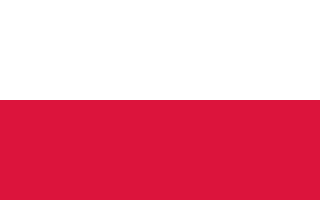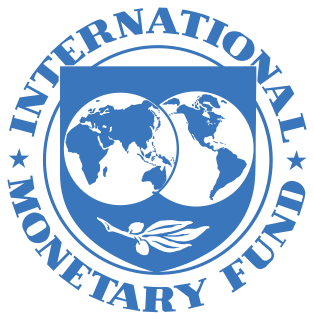Special drawing rights are supplementary foreign-exchange reserve assets defined and maintained by the International Monetary Fund (IMF). The SDR is the unit of account for the IMF, and is not a currency per se. SDRs instead represent a claim to currency held by IMF member countries for which they may be exchanged. The SDR was created in 1969 to supplement a shortfall of preferred foreign-exchange reserve assets, namely gold and the U.S. dollar.

The Bretton Woods Conference, formally known as the United Nations Monetary and Financial Conference, was the gathering of 730 delegates from all 44 Allied nations at the Mount Washington Hotel, situated in Bretton Woods, New Hampshire, United States, to regulate the international monetary and financial order after the conclusion of World War II.
The Group of Ten refers to the group of countries that agreed to participate in the General Arrangements to Borrow (GAB), an agreement to provide the International Monetary Fund (IMF) with additional funds to increase its lending ability.
The global financial system is the worldwide framework of legal agreements, institutions, and both formal and informal economic actors that together facilitate international flows of financial capital for purposes of investment and trade financing. Since emerging in the late 19th century during the first modern wave of economic globalization, its evolution is marked by the establishment of central banks, multilateral treaties, and intergovernmental organizations aimed at improving the transparency, regulation, and effectiveness of international markets. In the late 1800s, world migration and communication technology facilitated unprecedented growth in international trade and investment. At the onset of World War I, trade contracted as foreign exchange markets became paralyzed by money market illiquidity. Countries sought to defend against external shocks with protectionist policies and trade virtually halted by 1933, worsening the effects of the global Great Depression until a series of reciprocal trade agreements slowly reduced tariffs worldwide. Efforts to revamp the international monetary system after World War II improved exchange rate stability, fostering record growth in global finance.
The balance of payments, also known as balance of international payments and abbreviated B.O.P. or BoP, of a country is the record of all economic transactions between the residents of the country and the rest of the world in a particular period of time. The balance of payments is a summary of all monetary transactions between a country and rest of the world. These transactions are made by individuals, firms and government bodies. Thus the balance of payments includes all external visible and non-visible transactions of a country. It is an important issue to be studied, especially in international financial management field, for a few reasons.

The Bretton Woods system of monetary management established the rules for commercial and financial relations among the United States, Canada, Western European countries, Australia, and Japan after the 1944 Bretton Woods Agreement. The Bretton Woods system was the first example of a fully negotiated monetary order intended to govern monetary relations among independent states. The chief features of the Bretton Woods system were an obligation for each country to adopt a monetary policy that maintained its external exchange rates within 1 percent by tying its currency to gold and the ability of the IMF to bridge temporary imbalances of payments. Also, there was a need to address the lack of cooperation among other countries and to prevent competitive devaluation of the currencies as well.

The Bank of Korea is the central bank of the Republic of Korea and issuer of South Korean won. It was established on June 12, 1950 in Seoul, South Korea.
The Exchange Stabilization Fund (ESF) is an emergency reserve fund of the United States Treasury Department, normally used for foreign exchange intervention. This arrangement allows the US government to influence currency exchange rates without affecting domestic money supply.

The National Bank of Tuvalu (NBT) is the sole provider of banking services in Tuvalu related to taking deposits, making loans and engaging in foreign exchange transactions.
In 1945, China cofounded the International Monetary Fund (IMF) with 34 other nations. In April 1980, the People’s Republic of China, established a formal relationship with the IMF. The Chinese-IMF relationship mainly operates around affairs associated with IMF governance and the IMF Special Drawing Rights (SDR).
El Salvador has been a member of the International Monetary Fund (IMF) since 1946. Their quota currently consists of 287.20 million SDR. The country has received loans from the IMF in the past, but most recently has received only standby loans and currently has no outstanding payments. As of June 2017, the standby arrangements total 1,442,300 SDR while the government has only drawn upon 132,250 SDR.
The International Monetary Fund (IMF) has operated in Malawi since 1965.
Vietnam joined the International Monetary Fund (IMF) on September 21, 1956, under the policy of Article VIII. Their quota contributes an estimated SDR of 1,153 millions and voting power of 0.24%. As of August 2016, the current IMF Resident Representative to Vietnam is Jonathan Dunn.
Jamaica joined the International Monetary Fund (IMF) in February of 1963 under the leadership of The Rt. Hon. Sir Alexander Bustamante, one year after the country’s independence. From 1963 to 1966, Rt. Hon. Sir Donald Sangster served as Jamaica’s governor to the IMF and World Bank, and represented Jamaica during delegations held at the IMF and World Bank's Washington D.C. headquarters. In 1963, the IMF made its first loan to Jamaica ever, in the amount of 10 million SDR’s. In 1967, Sir Donald Sangster was elected as Jamaica's second Prime Minister, simultaneously serving as Minister of Finance and Minister of Defense.

Poland was one of the founding members of the IMF in 1945. Under pressure from the Soviet Union, the country withdrew in 1950, reasoning that the organization had become a tool for the United States. Following the end of Poland's martial law in 1983 and the United States' lifting of a veto against Polish membership, Poland rejoined the IMF in 1986.





